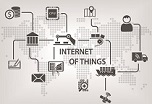Internet of Things (IoT)

Internet of Things: Machines vs. Sensors
The concept of the Internet of Things is generally perceived as enhanced machine-to-machine communication; it is built upon a foundation of cloud computing and data-gathering sensors. It operates through mobile, virtual, and instant connections and is predicted to make everything in our lives, from street lamps to the refrigerator at home, "smart".
Much of the discussion has focused on Machine-to-Machine (M2M) communication; that is, devices talking to devices. However, a device or machine is a tool, created to perform a specific task. When we talk about making machines smarter, what is meant is not M2M. At this point, what comes to the forefront are sensors.
A sensor is not a machine. It does not have the kind of tasks that machines perform. It measures and assesses; in short, it collects data. The concept of the Internet of Things becomes more valuable when considered as a conversation between sensors and machines. However, the information collected by sensors will lose its significance if there is no infrastructure to process it in real-time.
Cloud-based applications currently hold a critical point in terms of real-time data processing. Without cloud support, the Internet of Things would fall short in evaluating all the information coming from these sensors.